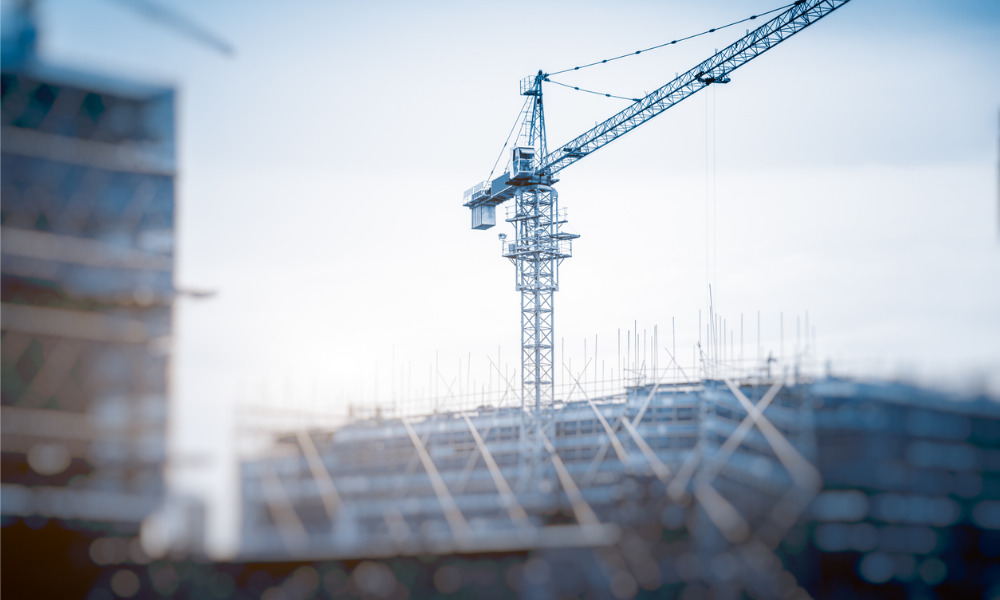Calls for crane safety to improve following tragic collapse in B.C. last month

Following the tragic crane collapse in Kelowna, B.C., last month which killed five workers, there has been a growing spotlight on crane safety in Canada.
Local and national groups are calling for changes to improve the safety of those working onsite:
“We strongly encourage the B.C. government to legislate mandatory training and certification of workers involved in the assembly and dismantling of tower cranes, setting out minimum qualification standards, as well as establishing a registry of individuals who work in this industry,” said Brian Cochrane, business manager of International Union of Operating Engineers (IUOE) Local 115 in a statement.
Ontario
Over the last year, there have been a number of crane collapses across the country – notably in Toronto where a portion of a crane collapsed in the downtown area on July 10. And this is not the first time; last summer, two separate crane incidents occurred in Toronto’s downtown.
While these incidents thankfully bore no deaths or serious injuries, this hasn’t been the case previously.
In 2020, a crane collapse in Oakville, ON, left two people dead and three injured. In 2016, a crane collapse in Montreal, QC, left one person dead and one injured. The series of crane collapses in Toronto actually led to an inspection blitz between Aug 31 – Dec 31, 2020, conducted by Ontario’s Ministry of Labour, Training and Skills Development.
And on July 14 this year, Ontario’s Ministry of Labour also launched a public consultation in an effort to improve health and safety requirements for tower cranes.
The regulations under review include the Construction Projects Regulation, O. Reg. 213/91 and O. Reg. 420/21: Notices and Reports Under Sections 51 to 53.1 of the Act - Fatalities, Critical Injuries, Occupational Illnesses and Other Incidents.
Statistics
While it is harder to track exact statistics in Canada, in the U.S. according to the U.S. Bureau of Labor Statistics (BLS), between 2011 and 2015, 220 crane-related deaths were reported by the Census of Fatal Occupational Injuries (CFOI). In 2019 alone, OSHA reported 16 crane accidents involving injury or death to employees working at/near cranes.
A crane collapse which killed a school bus driver in the late 1980s is largely regarded as the push behind the institution of crane certification by the U.S.’s federal Occupational Safety and Health Administration (OSHA).
One of the more recent fatal collapses in the U.S. was in Seattle in April 2019 in an incident that killed four people – including two of the jobsite’s ironworkers.
The BLS reports the most common cause of fatalities is workers or bystanders struck by an object or equipment falling from the crane (62 per cent), other causes include falls (20 per cent), transportation incidents (10 per cent) and contact with electrical current (8 per cent).
WorkSafeBC
And the numbers in the U.S. have certainly impacted Canadian initiatives – WorkSafeBC says that following a series of catastrophic incidents involving tower cranes in the U.S., the organization established a Provincial Crane Inspection Team (PCIT) in 2008 in response.
Furthermore, looking at the potential hazards posed by cranes, numerous workplace safety organizations around Canada have been ratcheting up their safety plans like Ontario. For example, WorkSafeBC’s 2021 – 2023 Crane and Mobile Equipment Initiative was launched to identify and eliminate unsafe practices for devices including mobile cranes, boom trucks and elevated work platforms.
PCIT has collaborated with BC Crane Safety on a number of resources for crane operators, including a Crane Supervisor Tool and a BC Crane Safety Tower Crane Assembly/Disassembly Industry Best Practice Tool, developed in 2020 to define employer responsibilities.
WorkSafeBC, alongside the BC Coroners Service and the RCMP, are each conducting investigations into the Kelowna crane collapse.
Compliance
Ultimately, it is essential that owners, prime contractors et employers understand that they are responsible for the safety of workers at their worksites, and adhere to and comply with the appropriate regulations.
So what can these groups to do improve safety for workers? Here is a (non-exhaustive) list of things to look out when operating a crane/working near a crane that will hopefully help lessen the risks:
1. Pick the right crane and equipment for the job;
2. Ensure that items are properly secured and that load limits are understood;
3. Make sure that you have the proper space for the crane to operate – and enough time so as to avoid rushing;
4. Ensure that workers operating the crane have the appropriate training and qualifications (and if not, provide education and training);
5. For those working around/near the crane, make sure that they are at a safe distance from the operations;
6. Perform regular checks and implement check lists to make sure that nothing is missed;
7. Ensure that there are clear lines of communication between the crane operator and other workers.





